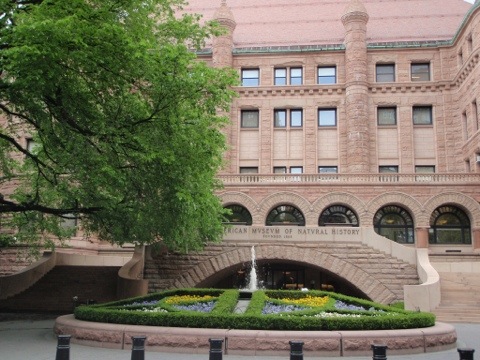Manhattan, warm and rainy in mid-May, is a long way from the Polar Sea, but if we are to study the Crocker Land expedition, this is the place to begin. Almost as soon as they returned from their first northern adventure as “tender feet” with Robert E. Peary’s North Pole expedition in 1909, George Borup and Donald B. MacMillan were planning a new expedition. Their goal was to find Crocker Land, an island sighted by Peary to the north and western of Axel Heiburg Island. Such an expedition is not to be undertaken lightly, and the two men soon began looking for sponsors. One of the first places they looked to was The American Museum of Natural History (AMNH), in New York. As early as 1911, MacMillan wrote to them suggesting they sponsor a two-year expedition. Ultimately the AMNH did sponsor the expedition, which is why we have come here, to study the papers, photographs and other materials in the museum’s archives, and to learn more about how the expedition took shape.
While the expedition is named for the geographic region MacMillan and Borup intended to investigate, their goals were broader and more scientifically focused. This was in keeping with contemporary trends in exploration, as the unknown areas of the world map were filled in and people turned their attention to understanding the people, animals and plants that inhabited them. In 1911 Borup was a graduate student in geology at Yale, while MacMillan was studying anthropology at Harvard. Their plan was to travel north in the summer to be ready for an early spring sledging trip across the frozen ocean to Crocker Land. In the months prior to this trip, and for the year following, they would conduct scientific research. In 1911 MacMillan estimated that this could be accomplished for about $15,000.
As we know, in broad outline, this is indeed what happened, but not without a lot of ups and downs along the way. Over the next months and years, we will document our studies of this expedition, looking at it from a variety of perspectives and providing glimpses of both how the expedition itself developed, and how our own exhibit research progresses.

